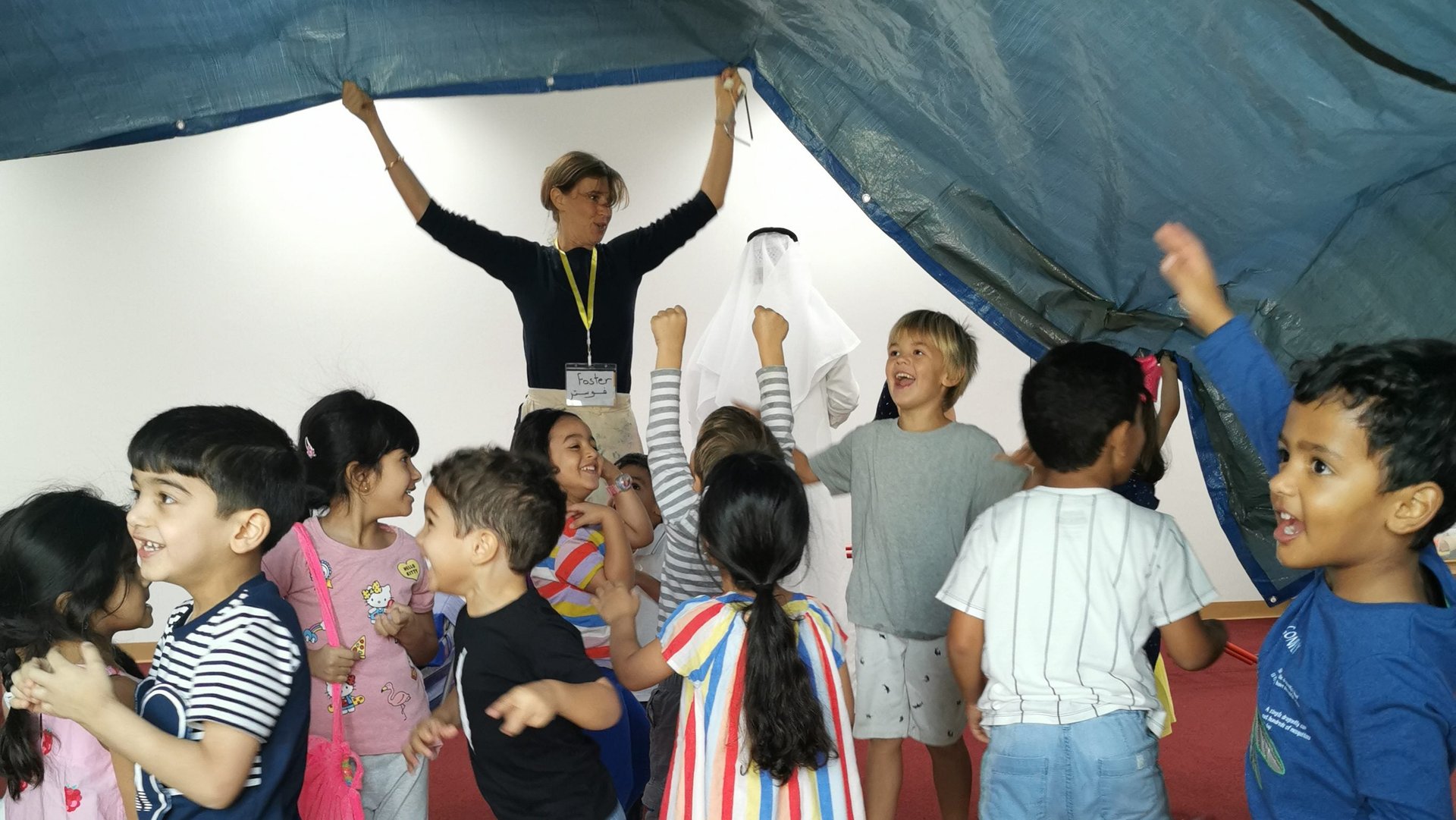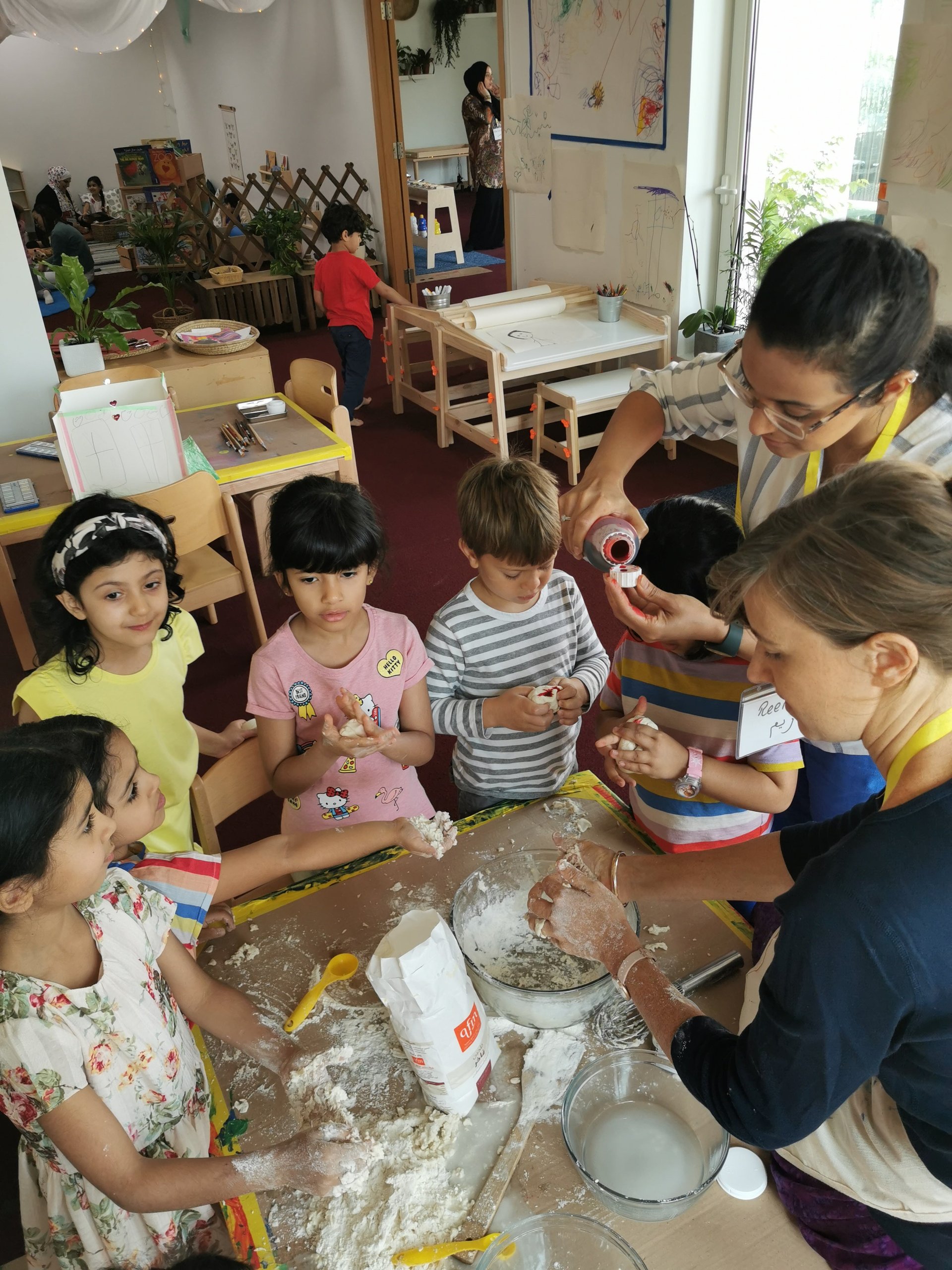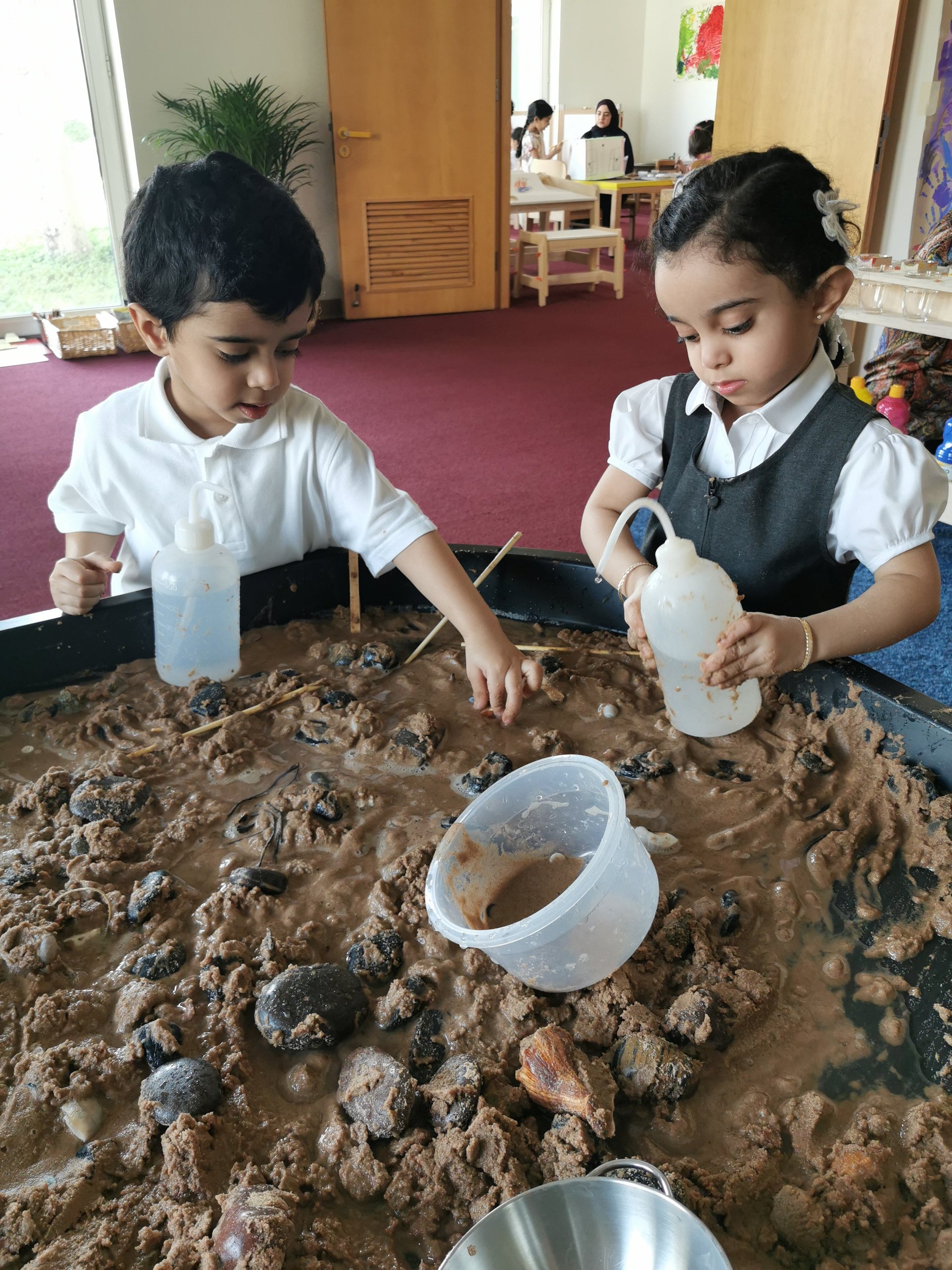An innovative preschool in Qatar is teaching toddlers empathy
Early childhood education has increasingly become just one more opportunity to cram toddlers full of knowledge in order to “prepare” them for formal schooling. An unusual preschool in Ar-Rayyan, Qatar is proposing a radical alternative.


Early childhood education has increasingly become just one more opportunity to cram toddlers full of knowledge in order to “prepare” them for formal schooling. An unusual preschool in Ar-Rayyan, Qatar is proposing a radical alternative.
Academyati won’t make little kids fill out piles of worksheets that measure their likelihood of successfully entering first grade. Instead, they’ll learn to connect with nature and the world around them, have plenty of time to play outside, and build meaningful relationships with their classmates—all in an enthusiastically tech-free environment. They’ll learn to tie their interests and passions to real-life challenges, and figure out what they can do about them, in a fully personalized way.
The idea: Raise the next generation of empathetic, socially conscious problem-solvers.
Academyati’s learning philosophy is underpinned by the notion that early childhood is a great time to instill values children will keep with them as they grow up, including empathy, social awareness, creativity, and respect for others and for the planet. That tracks with what developmental science tells us about how kids learn. The first few years of life, from birth to age five, lay the foundation for self-awareness and social and emotional skills. The values kids learn at that age mostly stay with them.
The biggest challenge—leading up to and in the days since the launch of Academyati on Aug. 25—is for teachers and school staff to get to know the children well enough to craft a personalized “academic journeys,” according to Maryam Alhajri, the school’s director.
Academyati opened its doors to an initial preschool class of 40 three-to-six-year-olds. It hopes to expand to 480 students through grade 12 by 2030. The school is a project of the Qatar Foundation, a nonprofit closely tied with the state, which invests in education and research. (The foundation funds 75% of Academyati’s yearly operating cost, which it declined to disclose, though the school hopes to become financially sustainable in five to 10 years.) Tuition costs 60,300 QAR ($16,500) a year for now, though that will go up as the school grows. Qatar is one of the richest countries in the world, with a per capita GDP of $69,000.
The best compliment anyone could pay a preschool is probably to compare it to a Finnish school. And that’s exactly what Kristiina Kumpulainen, a professor at the Playful Learning Center of the University of Helsinki, did when she reviewed Academyati’s planned curriculum and pedagogy. Finland’s preschool system, which is entirely personalized, has been held up as a gold standard for its focus on creating a holistic learning environment and fostering the teacher-child relationship. Can Academyati do the same?
The Academyati learning model
Erika Christakis is an early-childhood educator and author of The Importance of Being Little: What Preschoolers Really Need from Grownups. She recently explained in The Atlantic that she can “pretty quickly take the temperature” of any given preschool classroom by checking out “the looks on kids’ faces, the ratio of table space to open areas, and the amount of conversation going on in either.”

“In a high-quality program,” she writes, “adults are building relationships with the children and paying close attention to their thought processes and, by extension, their communication. They’re finding ways to make the children think out loud.” That back-and-forth interaction between a toddler and her carer (what some experts are calling “serve-and-return”) is the key to a child’s development—the secret sauce, if you will, of early childhood education and growth.
A preschool is teaching kids what they need to know if it is building upon their natural curiosity about the world, allowing them time to play, and encouraging them to spend time in the outside world, away from screens. Kids under six don’t need to be sitting in college-seminar-like atmospheres completing phonetic assessments designed for first graders. Those exercises might please the admissions board of a fancy elementary school, but it won’t necessarily do much to build a child’s brain architecture and emotional intelligence.
Academyati thinks it can do better. A typical day starts between 7:30 and 8am and lasts five hours. Kids first choose a personalized “quest” to take part in. They might want to hear about what lives in trees, or learn how to make paper for example. Every one of these quests is then connected back to real-life challenges that are relevant to their lives, including those contained in Qatar’s Grand Challenges and the UN Sustainable Development Goals.
Once students complete their quest, they get a free hour to play, eat, do yoga, and learn music or martial arts. The kids finish their day in one of six “discovery rooms,” which teachers set up according to certain themes and stay in to guide children’s experiences. In the “living things room,” children can observe how insects live. They can take care of plants and some domestic animals—the school even has a chicken coop. “The day has a simple structure where independence and choice are the main drivers, and creativity and curiosity are always the focus,” says Alhajri.
The school, which teaches in both Arabic and English, follows its own personalized education model, combining elements of other noted early learning philosophies, including Montessori or Reggio Emilia. Children between three and six are mixed together according to interests, regardless of age. Every child gets their own curriculum and learning plan, which they can follow at their own pace, based on their needs and abilities. At least twice a month, teachers meet with parents and with the child to update the learning plan and check in on progress. There is one teacher, or “collaborator,” as the school likes to call them, for every seven toddlers.
Throughout the day teachers, all of whom have relevant bachelor’s degrees, help kids connect what they’re learning with their broader interests and their lives through what the school calls “nudges.” They might take the form of a question, like “Based on what you learned, what action would you like to take?” A 4-year-old curious about the ocean could learn about the challenges of marine conservation, for example, and then be prompted to take part in a beach cleanup. Students might learn about recycling by collecting items meant for the trash and repurposing them into art, or by discussing where food comes from during meal times and learning how to limit waste.
Hands-on education allows Academyati to connect kids with “what’s happening in the world around them,” says Alhajri, through experiential learning. “When connecting with real life scenarios we are able to plant the seed and they come back with more questions and solutions,” she wrote in an email.
How to teach little kids empathy
Almost everyone is born with the capacity to develop empathy. Whether we do or not largely depends on the kind of experiences we have in early childhood.
Empathy is the ability to understand and be sensitive to other people’s feelings. The effort to teach it is part of a larger movement promoting “social-emotional learning,” which the Collaborative for Academic, Social, and Emotional Learning, a research organization based in Chicago, defines as “the process through which children and adults understand and manage emotions, set and achieve positive goals, feel and show empathy for others, establish and maintain positive relationships, and make responsible decisions.”

Schools do this in different ways. Academyati focuses on social-emotional learning by connecting everything kids learn to real-life challenges. “Students’ engagement and passion for learning greatly increases when what they learn is relevant and connected to their daily experiences,” says Alhajri. “They also are greatly empowered when they are trusted to innovate solutions that could enhance the world around them.”
Kids develop the foundational tools that enable empathetic responses—differentiating between emotions, sympathizing with people’s feelings, and imitating behavior—between birth and age seven. That’s why experts say early childhood is the best time for adults and peers to model these emotional responses so kids can learn them. Some countries, like Denmark, teach all children about empathy starting in preschool.
Linking empathy to concepts that are relevant to little kids, says Tina Malti, a developmental and clinical psychologist and founding director of the Laboratory for Social-Emotional Development and Intervention at the University of Toronto, is key. “Those components relate to learning, to thriving, to productivity, but also to what I want to call a kind of civic responsibility that is as important as productivity in our highly-diversified world,” she says.
A 2015 study conducted by researchers at Pennsylvania State University showed that kindergarten teachers’ ratings of their students’ prosocial skills—their willingness to help others—around age five was associated with positive outcomes 19 years later. More prosocial kids at age five were more likely to graduate from high school on time and to get a college degree. They were less likely to live in or be on a waitlist for public housing.
But this kind of learning model is predicated upon teachers’ ability to get to know a bunch of boundary-pushing three-year-olds well enough to truly tailor their experience in the school to their needs and interests. And that doesn’t just mean figuring out who has a learning disability or who’s afraid of the outdoors. It means “getting to know them at a deep human level,” which “is our crucial mission and challenge in order to succeed with this pedagogical model,” says Alhajri.
Kumpulainen says that’s the biggest challenge faced by Finland’s personalized preschool system. She describes it as “weaving learning.” It’s not that school consists of following toddlers’ everyday whims; it’s that the adult (either the teacher or the parent) and the child work together to build the different elements of the learning process. “The role of the adult…is very important in jointly helping the child, and the child is an important partner in this,” explains Kumpulainen.
Meeting global challenges
There’s a limit to the wider lessons that can be applied from a place like Academyati. The school serves a tiny population of parents who are either independently wealthy or whose employers sponsor their children’s school fees, and the parents want to be very involved in their kids’ education. If Academyati succeeds in instilling empathy and other social-emotional skills in its students, it’ll prove what we already know—that small-scale, high-quality interventions during children’s formative years can improve their outcomes later in life.
Still, as the school launches, the questions it hopes to tackle are relevant far beyond the borders of Qatar. This generation of toddlers will face world-altering challenges—including climate change, automation, and increased migration—that they will need to work with people around the world in order to tackle. In that context, we could all do with a little more empathy, compassion, and respect.
Can schools teach us those values?
“True education means both teaching the mind and the heart,” says Malti. “This is how we become productive, humane, and socially responsible citizens.”
Read more from our series on Rewiring Childhood. This reporting is part of a series supported by a grant from the Bernard van Leer Foundation. The author’s views are not necessarily those of the Bernard van Leer Foundation.